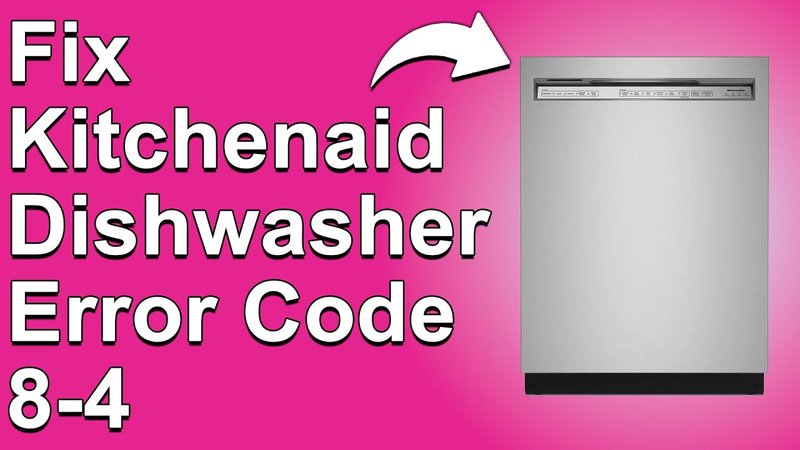
Error code F1 usually relates to a water supply problem in your Kitchenaid dishwasher. It’s like when you’re trying to fill a cup with a straw that’s blocked — no matter how hard you try, nothing comes through. Understanding how your dishwasher’s water system works and how to keep it clog-free is key to ensuring that error code stays a thing of the past.
Understanding Error Code F1: What It Means
Before we dive into prevention, it’s crucial to know what error code F1 actually means. When your Kitchenaid dishwasher displays this error, it’s telling you there’s an issue with the water supply—more specifically, the machine’s water inlet valve. Think of it as the gatekeeper for your dishwasher’s water supply. If this valve isn’t functioning properly, the dishwasher can’t get the water it needs to do its job.
Why does this happen? Sometimes dirt and debris can clog the valve or the connected pipes, similar to a garden hose that gets kinked, stopping water flow. Alternatively, electrical issues or a malfunction in the control board could also trigger the error. Understanding these basics helps demystify the problem and points you to potential solutions.
Here’s a tip: always pay attention to the first signs of trouble. If you notice your dishwasher isn’t filling with water as it should, or it’s making unusual noises, don’t ignore it. Addressing these issues early can prevent the error code from appearing in the first place.
Regular Maintenance: Your Best Defense
Preventive maintenance is your best proactive step against error codes. It’s like going to the doctor for regular checkups to catch any health issues before they become serious problems. Start by routinely cleaning the dishwasher’s filters and spray arms. This prevents food particles and gunk from building up and causing blockages.
Additionally, periodically inspect the water inlet valve. Look for any signs of clogging or wear and tear. It’s like peeking under the hood of your car to ensure everything is running smoothly. If you see any mineral deposits or debris, clean them off gently with vinegar or a similar solution. This not only helps the valve function properly but also extends its lifespan.
Remember, it’s not just about cleaning and inspecting. Be mindful of how you load your dishwasher. Overloading can lead to improper cleaning and put strain on the machine’s components, including the inlet valve. By paying attention to these small details, you can keep your dishwasher running like a well-oiled machine.
Common Causes and How to Tackle Them
Now, let’s delve into the common causes of error code F1 and how to tackle them effectively. One of the primary culprits is poor water pressure. If the water pressure in your pipes is too low, the dishwasher might not receive enough water, causing the error code to appear. Think of trying to fill a balloon with a weak stream of water—it takes forever, if it happens at all.
To resolve this, check your home’s water pressure. If it’s on the lower side, consult with a professional plumber to see if they can boost it. Another common cause is a faulty water inlet valve. These valves can wear out over time, especially in homes with hard water. Replacing a worn-out valve is often a straightforward task that can be handled with basic tools.
Sometimes, the error could stem from an electrical issue within the dishwasher. In these cases, it’s wise to seek professional help. Tinkering with electronics can be like trying to solve a jigsaw puzzle—one wrong move and things can get messy. An experienced technician can diagnose these problems more accurately and safely.
Wrapping It Up: Prevention Tips for Peace of Mind
So, what’s the best way to prevent error code F1 from disrupting your life? Routine checks and maintenance are your best friends. Keep an eye on your water pressure, and don’t forget to clean the filters regularly. Treat your dishwasher with care, and it will return the favor by running smoothly.
By understanding what causes error code F1 and taking some straightforward preventive measures, you can enjoy a hassle-free dishwashing experience. The next time you hear your dishwasher running, you can relax knowing you’ve done your part to keep it in tip-top shape. Remember, a little attention goes a long way in preventing problems and ensuring your appliance serves you well for years to come.